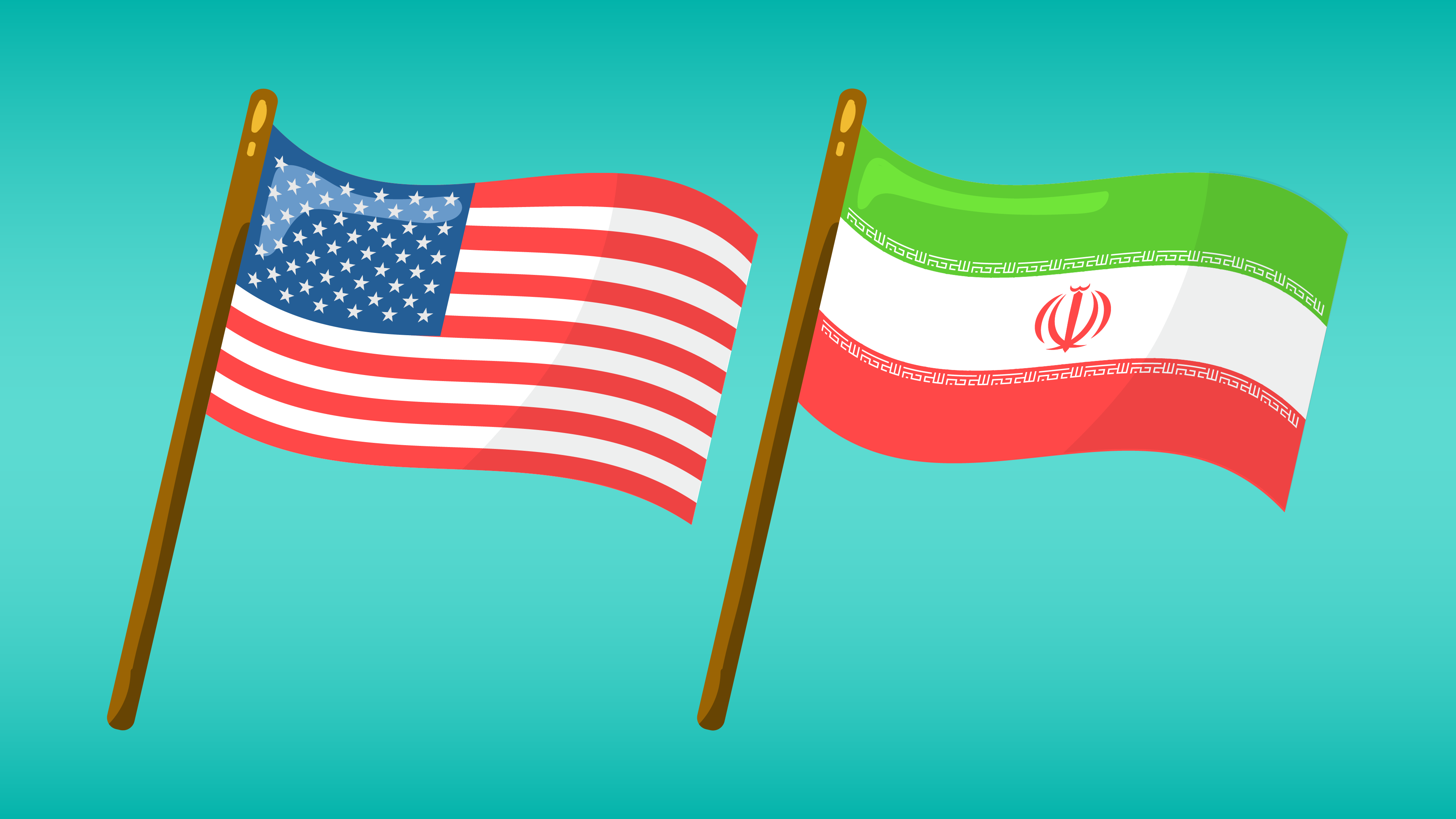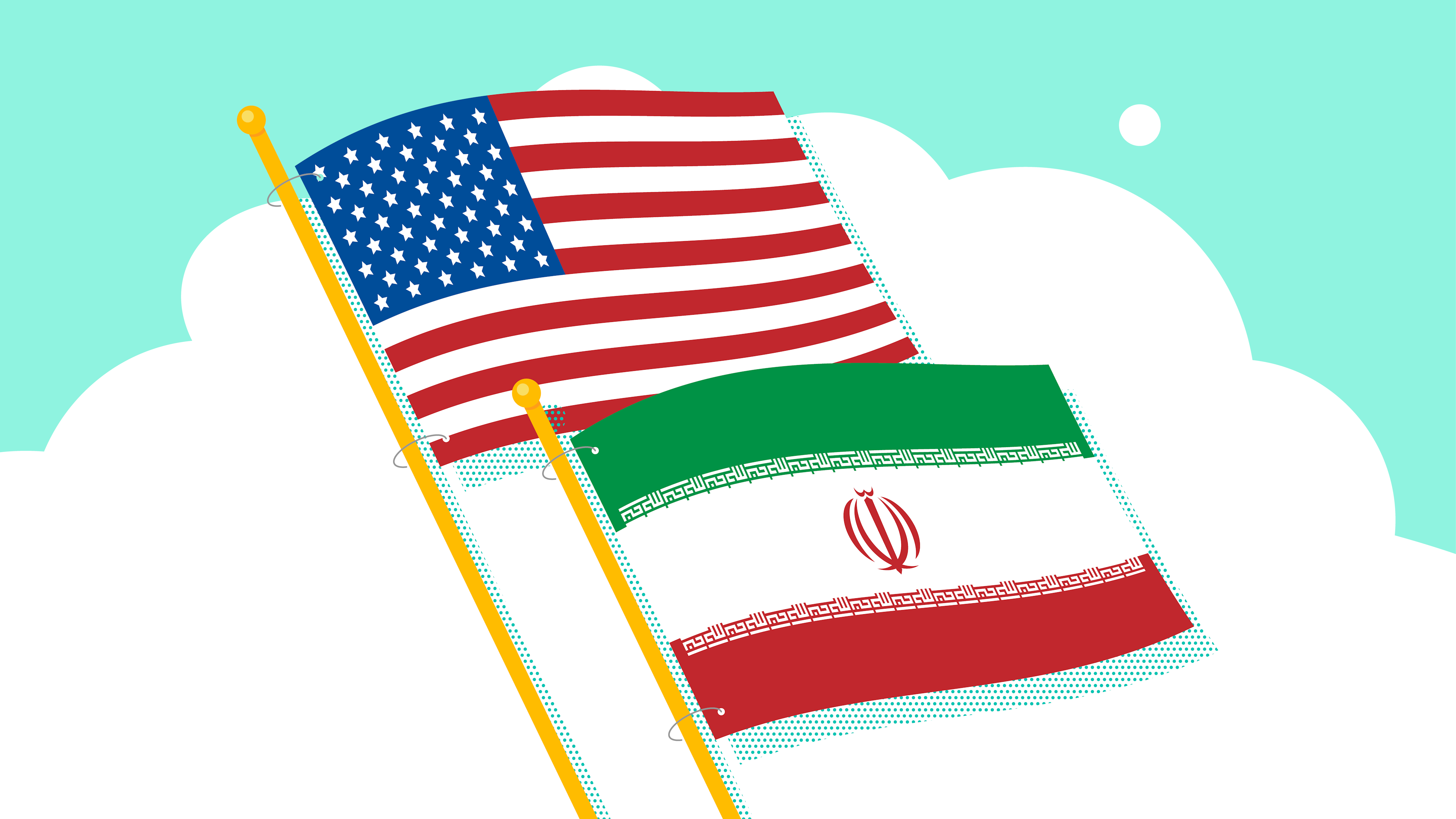Editor's Note: This guide was updated on January 12, 2020.
Earlier this month, the US killed Iran’s top general in an airstrike. It put the countries on the brink of an armed conflict.

The Story
The US and Iran have a long and complicated history of being on the rocks. Buckle up.
The Background
Tensions between the US and Iran date back to 1953. That’s when the US and the UK helped pull off a coup against Iran’s prime minister, because of fears the country could fall to communism. The ouster put a pro-Western shah in power. After that, things calmed down for a while. But Iranians viewed this as the US inappropriately meddling in their politics. And eventually, the 1979 Islamic Revolution happened.
It’s been a minute since my last history class. Remind me.
Civilians were angry that the country was becoming more Western and revolted. The conflict led to the Iran hostage crisis – when US Embassy staff in Tehran were taken hostage for more than 400 days – and to the country becoming an Islamic republic. This is also when it pressed pause on its nuclear program. We Skimm’d it for you in our Skimm Notes. Bottom line: after this, the US cut off diplomatic ties.
Drama, drama, drama.
Well said. Iran wound up restarting its nuclear program in the ‘80s during the Iran-Iraq war. And years of talks to get Iran to curb its program didn’t really stick...until the 2015 Iran nuclear deal between the US, Iran, and five other countries. The fine print: countries would lift heavy economic sanctions against Iran in exchange for it curbing its nuclear program. Some saw it as a way of dodging a military conflict with Iran. Others saw it as the US being too lenient with a country that was once considered part of an “axis of evil.” Skimm Notes gets into the back-and-forth around the Iran nuclear deal. You'll learn:
✷ How Iran's nuclear program got started
✷ What brought Iran to the nuclear negotiating table, and what's in the deal
✷ How the Trump admin feels about it
Didn’t the US pull out of that though?
Yes. In 2018, President Trump officially ditched the deal, arguing that it didn’t go far enough to stop Iran from building a nuclear weapon. In the aftermath, the US reimposed sanctions that have hit Iran’s economy hard. Iran said it would stop complying with parts of the nuclear deal. And tensions flared up between both countries last spring, which had some concerned that a war could break out. Things simmered down, until…
The Big Issue
President Trump ordered a drone strike that killed Iran’s top general, Qassem Soleimani, earlier this month. His death pushed the US and Iran to the brink of war.
Tell me more about Soleimani.
He was the head of Iran's Quds Force, an internationally-sanctioned military group that works outside of Iran's borders. Under Soleimani's decades of leadership, the Quds Force armed and trained Shiite militias in Iraq. It provided support to Hezbollah (which the US considers a terror group) in Lebanon. And helped prop up Syria's President Bashar al-Assad, who’s been accused of crimes against humanity (think: gas attacks on Syrian citizens). The Quds Force was also responsible for hundreds of American deaths during the Iraq war.
So his death...why now?
It’s something previous administrations considered but never acted on. The Bush 43 and Obama admins were reportedly torn over whether to take him out. They ultimately didn’t because of concerns over how Iran would retaliate. But after things started escalating in December, Trump decided to go for it.
What happened in December?
An American contractor was killed in an attack on an Iraqi military base. The attack was believed to have been carried out by an Iran-backed militia. So the US responded with airstrikes in Iraq and Syria that killed members of that militia. Then protesters in Baghdad – including members of the militia – broke into and destroyed the US Embassy there. Soleimani approved that siege.
And that’s when the US killed him?
Yes. The Pentagon says he was planning more attacks on American diplomats and service members in the Middle East, and that the threats were “imminent.” Though lawmakers who were briefed on the attack say ‘we’re not so sure about that.’
Gonna guess that Iran wasn’t happy about this.
Not at all. After Soleimani’s death, Iran announced it was completely pulling out of the Iran nuclear deal. And its supreme leader Ayatollah Ali Khamenei vowed "harsh retaliation." Many were worried about what exactly that meant, especially for the thousands of US troops in the region.
And the retaliation was…?
Iran launched more than a dozen ballistic missiles targeting two Iraq bases where US troops were stationed. No one was killed in those attacks. But that same day, a plane bound for Ukraine crashed outside Iran’s capital, killing all 176 people on board. Initially, Iran denied responsibility. But it eventually admitted to accidentally shooting down the plane, blaming “human error.”
So where do things stand now?
That remains to be seen. Iran said it concluded its “proportionate” response. But Trump is still putting the country on notice. He's going to hit Iran with sanctions and said that the “civilized world” needs to send Iran a message that its “campaign of terror” will not be tolerated. He also called on NATO to get more involved in maintaining regional stability and fighting terrorism there. And tweeted out support for Iranians who protested against the government after Iran came clean about the plane crash.
The Debate

There’ve been a lot of different reactions to Soleimani’s death and what it means for the world.
The Impact
The entire world has a stake in what happens between the US and Iran. Because this isn’t Vegas: any escalation between the two likely wouldn’t stay between them. Allies on both sides could get involved, potentially creating a global conflict. Some include…
Saudi Arabia...is Team USA. The kingdom is competing with Iran for control of the Middle East. The main reason for the Iran-Saudi drama is religion (Iran is mostly Shiite Muslim and Saudi Arabia is mostly Sunni Muslim). And the US backs Saudi Arabia in hopes that Iran won’t gain regional control. Skimm Notes explains Saudi Arabia’s complicated relationship with Iran. You’ll learn...
✷ When their rivalry got started
✷ Why it’s still going strong
✷ What the future looks like for the region
Russia…is Team Iran. For years, the two have worked together on key issues like military strategy. If Iraq follows through with its decision to push out US troops, it could create a vacuum for Russia to come in and increase its military presence and influence in the region (sort of like déjà vu with Syria last year).
Iraq…the US considers Iraq a key partner in the region on issues like fighting ISIS. Iraq also has ties to its neighbor Iran on everything from security to energy to and trade. Everyone’s watching to see which country Iraq sides with. On top of that, amid Iran’s retaliatory threats, the US-led coalition that’s fighting ISIS in Iraq paused those operations to help protect Iraqi bases from attacks. That’s led to concerns of a possible resurgence of the terror group.
The EU…just wants everyone to get along. It’s part of the Iran nuclear deal and has been on edge since Iran’s announcement last year about not following through on parts of the deal. In the aftermath of the US’s attack on Soleimani, some European countries have either removed or relocated troops in Iraq. And it shares the same concerns as Iraq: that less troops in the region could allow ISIS to gain more ground there.
Flare-ups between the US and Iran also put the world’s security at risk. Only nine countries have their own nukes. That doesn’t include Iran, but that could change since it pulled out of the nuclear deal. Experts say that move could put it within months of developing nuclear weapons. And Iran could potentially use these weapons against the US – especially troops in the Middle East. There’s also concern the country could share its nuclear tech with militant groups like Hezbollah.
Rising tensions between the US and Iran also have an impact on you. Here’s how all this can affect things like gas prices.
theSkimm
The US and Iran have been at odds for decades. But in the past year, the two have come close to conflict multiple times. It looks like both sides are choosing to stand down for now. But these flare-ups put the world on edge and open up questions as to whether peace in the Middle East is possible in the future.
Live Smarter
Sign up for the Daily Skimm email newsletter. Delivered to your inbox every morning and prepares you for your day in minutes.
